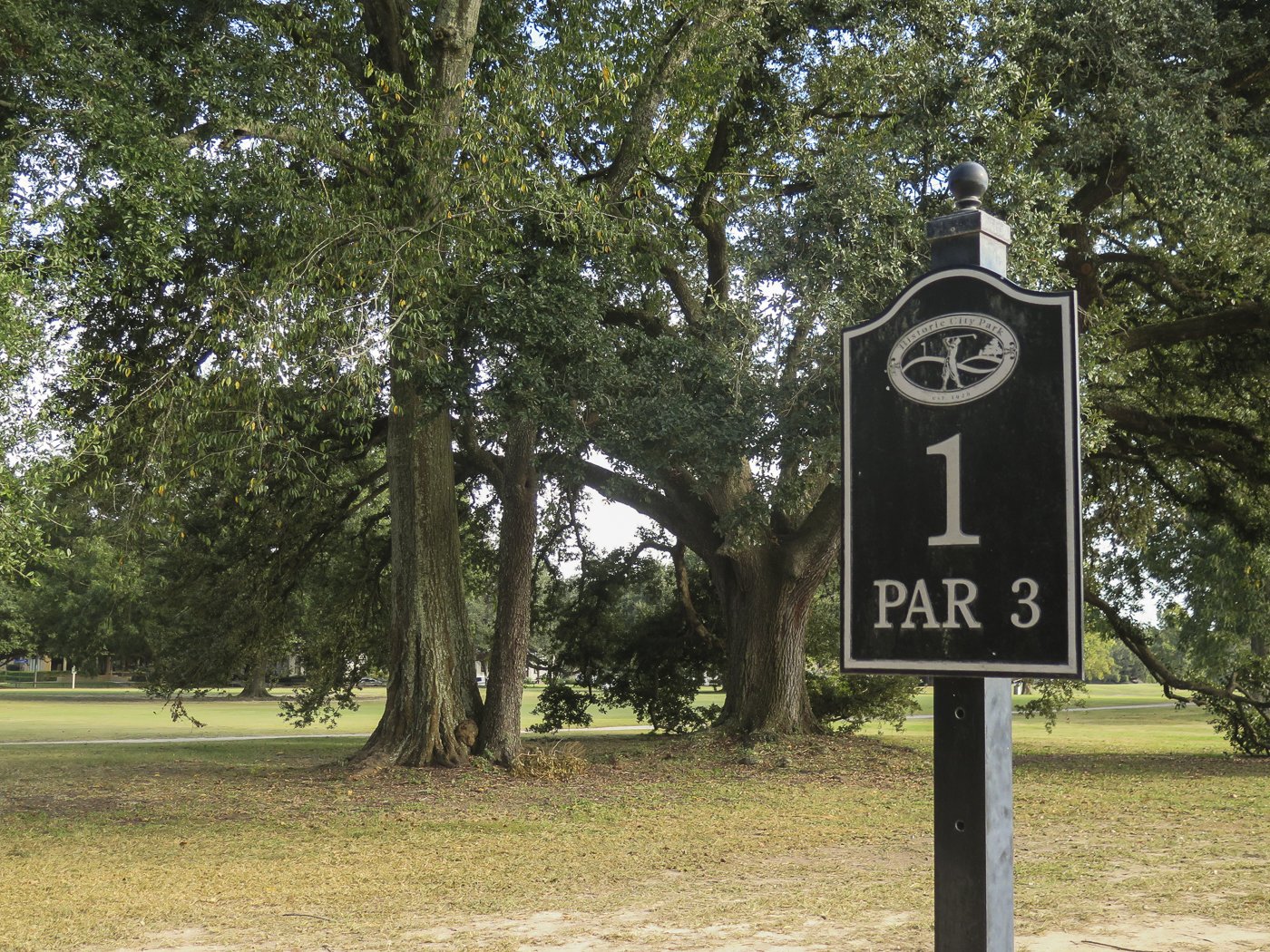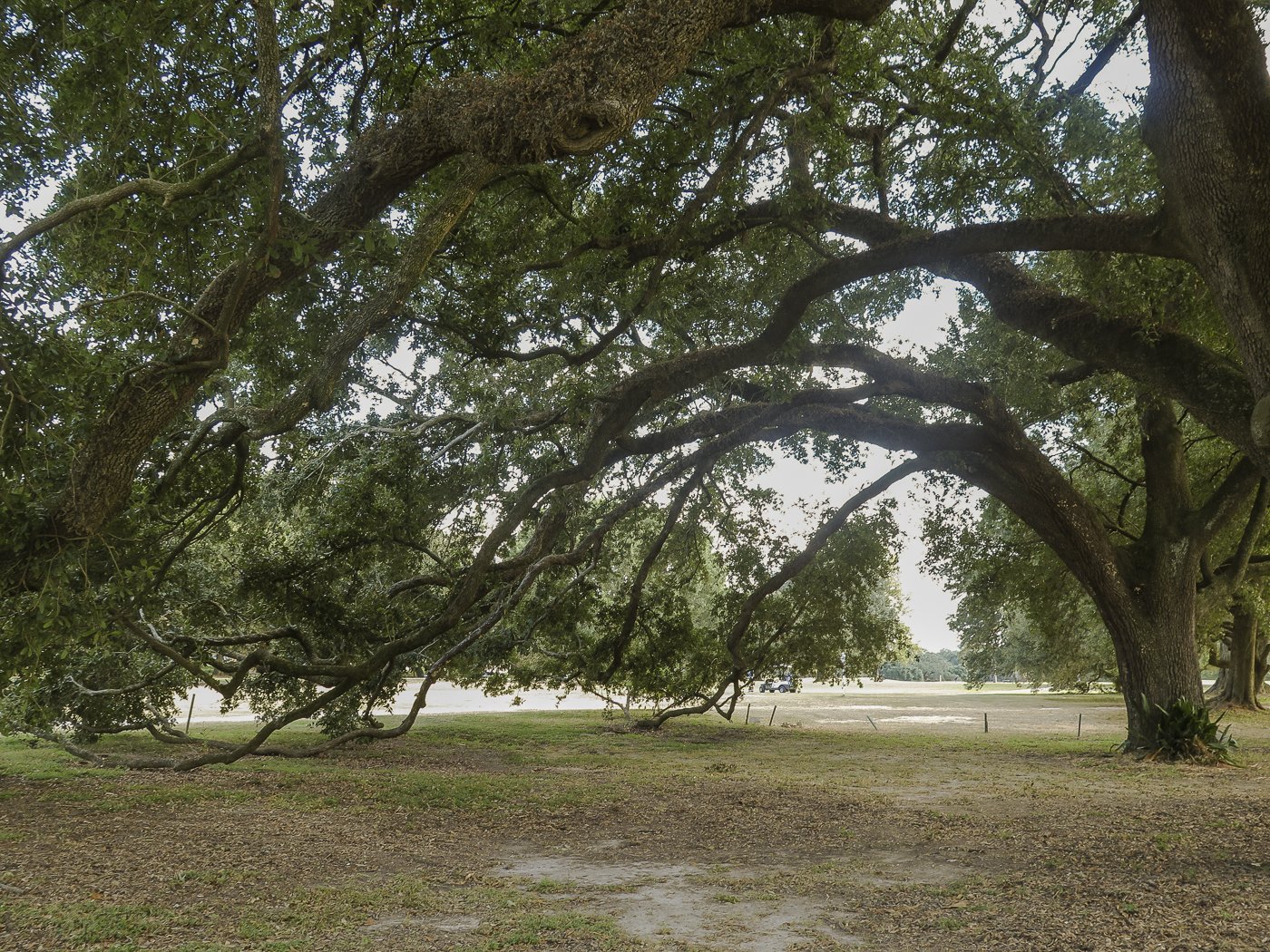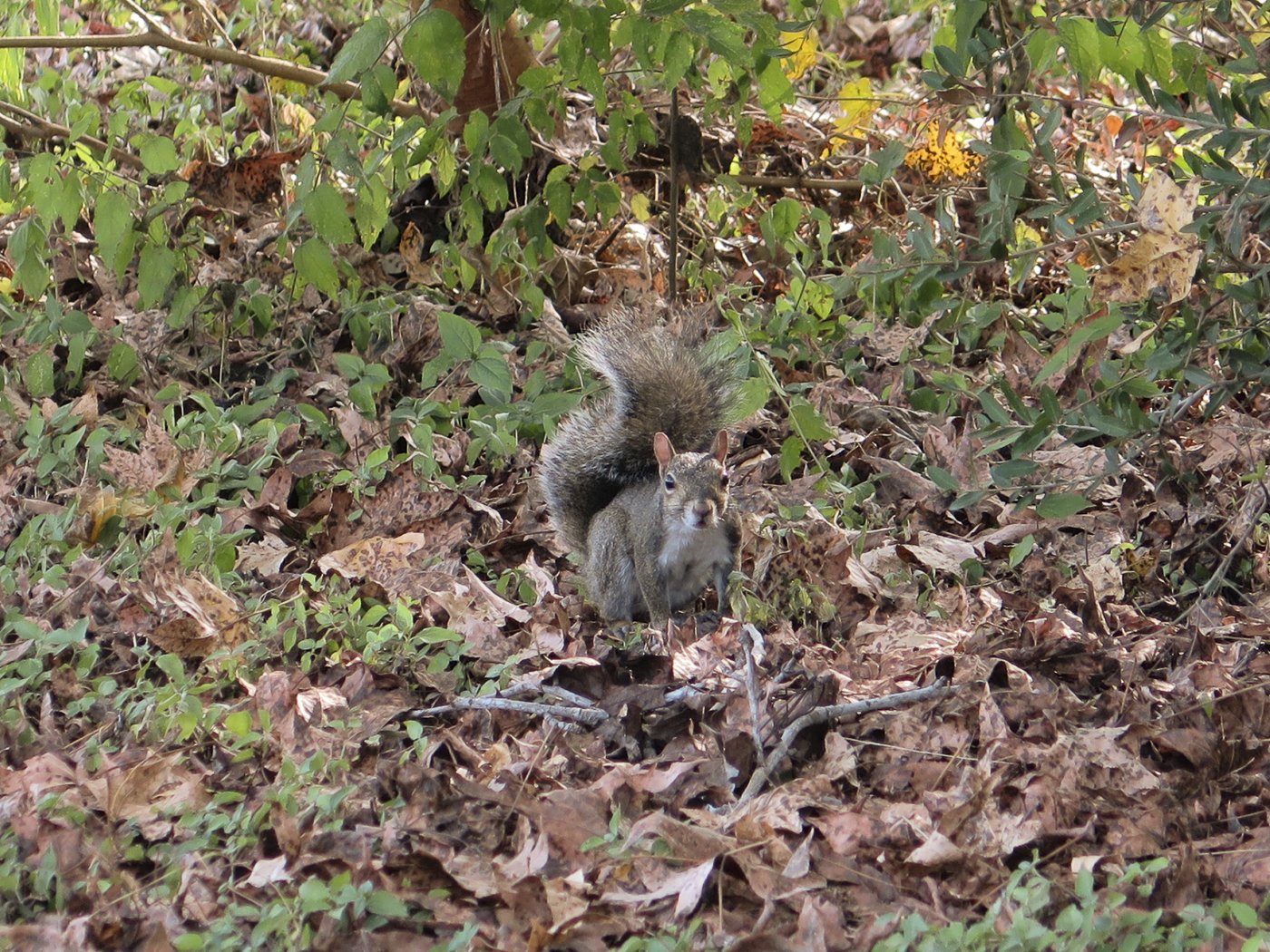Historic City Park Golf Course
-
City Park golf course is the oldest public course in Baton Rouge and among the oldest in the country. Designed in 1926 by Tom Bendelow, it will soon celebrate its centennial.
Bendelow designed hundreds of private and public courses throughout the country, including the second nine at the Baton Rouge Country Club and the Van Cortlandt Park golf course in New York City—the oldest public course in the country, opened in 1896 It is said more Americans learned to play golf on Bendelow-designed courses than those of any other golf course architect.
The golf course is on the National Register of Historic Places. -
City Park’s golf course contains some of the most beautiful and challenging golf holes in the country. It is one of the few courses in the state with actual topography.
The nine-hole, 2,037-yard course hosts more than 20,000 rounds of golf per year (since 2021).
City Park is not “half a course.” Many of the courses built in the early part of the 20th century—including Baton Rouge Country Club—were nine holes.
City Park has been hailed by golfing professionals and players alike as the only course where a beginner can learn the game of golf and still have an enjoyable round, a major factor in keeping them committed to the game.
Golf Course Digest columnist Ron Whitten, after playing City Park in 2004, wrote:
“City Park should be preserved precisely because it was created for the common man by the common man's golf course architect, Tom Bendelow.” -
The 16,000-plus rounds of golf played annually at City Park generate a surplus that is used to support other golfing operations. In the past few years, golf has enjoyed a resurgence of interest, and City Park has shown healthy growth in activity, enabling the course to become self-sustaining.
One of the oft-cited reasons for a decline in golf rounds is time. Nine-hole courses require much less time to play and require less of everything: space; equipment and supplies; labor, and the like.
And the golf course is a revenue source. Try to imagine City Park with no revenue source, the need for constant upkeep, and the ever-increasing demands of a multiple-use park.
-
City Park contains a 30-foot elevation change, a large topographic variety relative to the surrounding floodplain. The golf course is sensitively designed to take advantage of this natural topography. It is not a modern, “manufactured” course with berms, pot bunkers and artificial landscape features. It uses natural features to achieve its goal of challenging golf within a nine-hole format.
Biodiversity is a laudable concept, but biodiversity needs to be encouraged where it can flourish, not where it competes for resources within an urban environment. Audubon Park (which, again, has 18 holes of golf), is an excellent example of biodiversity within the context of an urban park. Arsenal Park near the State Capitol has a great deal of biodiversity. Contributing to this is a relative paucity of traffic around the Capitol. Re-making City Park is likely to create the opposite effect.
There is no such thing as a “highest and best use” for City Park. Highest and best use is not something that can be determined by polls, petitions, or media fiat—it must be determined by custom, consultation and consensus .
As Lillie Petit Gallagher once put it, “Politically sensitive park/recreation officials and landscape architects, unconcerned by the importance of preserving cultural landscapes view older mature landscapes as blank canvases. These are seen simply as spaces upon which to implement the most fanciful of design which reflect the latest community poll. It was unimaginable to me that anyone particularly landscape architects, parks officials and recreation consultants could be immune to the community history entwined within the City Park and its golf course. But immune they were.” -
City Park is bisected by a Kansas City Southern rail line that has been in continuous use since the early 20th century. The right-of-way is private property and regulated by the Federal Rail Administration.
Daily, trains loaded with a variety of hazardous materials pass through the park. Creating uncontrolled access to the areas traversed by trains creates unforeseen safety hazards to people using the park space.
No one knows the economic costs of making the park safe along the railroad grade (site preparation and remediation, fencing, signage, warning signals, etc.), and no one knows the return on investment in such a scheme.



City Park (Township 7 S. Range 1 W East Baton Rouge Parish) 154 acres; golf course 40 acres; 9 holes; 2,037 yards
Land Ownership Title Chain [abbreviated] for
City Park
Facts & Timeline
James Hillen acquired property Spanish Land Grant to which City Park traces its roots
1786
1815-1856
Duplantier to Perkins (many owners between)
City of BR donated property to LSU with caveat that if not used for a farm it was to be returned to the city
1878-1923
1923-1924
LSU returned property to the City of Baton Rouge after Gov. Murphy Foster intervened
Contract w/American Park Builders (Myron West/Tom Bendelow)
1923
1924
Construction Begins
City of Baton Rouge acquired Wm S. Pike estate
1856-1866
Perkins to Pike
1866-1878
BREC political subdivision formed by Legislative Act 246 (1946) Sec. 3 (b) of Article 14, Constitution of the State of Louisiana
1924-1946
City of BR to BREC
1946
City Park
Golf Course Timeline … Continuous Play
Informal Play
1925
1928
Officially Opened (Aug 3, 1928)
City Parks Alliance recognizes "Frontline Parks" to promote and highlight inspiring examples of urban park excellence, innovation, and stewardship across the country. The program also seeks to highlight examples of the challenges facing our cities' parks as a result of shrinking municipal budgets, land use pressures, and urban neighborhood decay.
Golf Pros / Course Managers
1928-1954 Marion Scobel
1954-1960 Mike Barbato
1960-1977 Harry Neese
1977-1992 Malcolm Landry
1992-1998 James Gater Bates
1998-2006 Coach Richy Ory
2006-2012 Bill Martin
2012-2020 Danny Simoneaux
2020-2020 Jack Terry
2021-2021 Charlie Marquette
2021- 2024 Kurt Bailey
2025- Matt Berry


